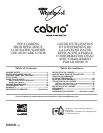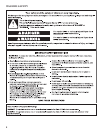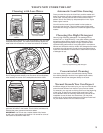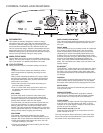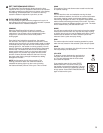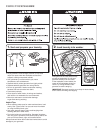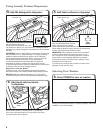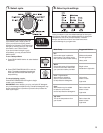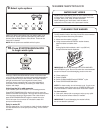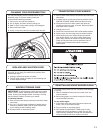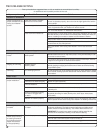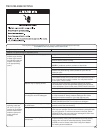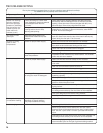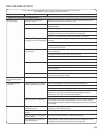
7
USING YOUR WASHER
• Empty pockets. Loose change, buttons, or any small
object can pass under the washplate and become
trapped, causing unexpected sounds.
• Sort garments by recommended cycle, water
temperature, and colorfastness.
• Separate heavily soiled garments from lightly soiled.
• Separate delicate garments from sturdy fabrics.
• Do not dry garments if stains remain after washing,
because heat can set stains into fabric.
• Treat stains promptly.
• Close zippers, fasten hooks, tie strings and sashes,
and remove non-washable trim and ornaments.
• Mend rips and tears to avoid further damage
to garments during washing.
Helpful Tips:
• When washing water-proof or water-resistant items, load
evenly. See “Cycle Guide” for tips and more information
on using the Bulky Items cycle.
• Use mesh garment bags to help avoid tangling when
washing delicate or small items.
• Turn knits inside out to avoid pilling. Separate lint-takers
from lint-givers. Synthetics, knits, and corduroy fabrics will
pick up lint from towels, rugs, and chenille fabrics.
Always read and follow fabric care label instructions to avoid
damage to your garments.
1. Sort and prepare your laundry
Load garments in loose heaps evenly
around the washplate. Do not load
garments directly over the center
of the washplate; when loaded, the
center of the washplate should be
visible. Try mixing different sized
garments to reduce tangling.
IMPORTANT: Garments need to move freely for best cleaning
and to reduce wrinkling and tangling.
2. Load laundry into washer



